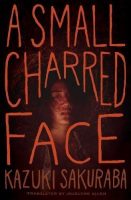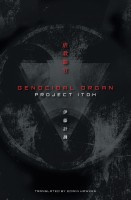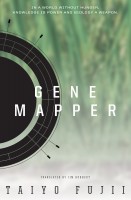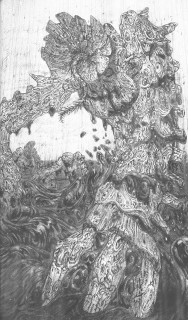 Author: Kazuki Sakuraba
Author: Kazuki Sakuraba
Translator: Jocelyne Allen
U.S. publisher: Viz Media
ISBN: 9781421595412
Released: September 2017
Original release: 2014
Kazuki Sakuraba is a fairly prolific author in Japan, having written numerous short stories, essays, and novels; sadly, only a small handful of those have been translated into English thus far. Although Sakuraba is probably best known as the creator of Gosick (which, I’ll admit, I still need to actually read), my introduction to her work was through Red Girls: The Legend of the Akakuhchibas, an award-winning, multi-generational epic which I thoroughly enjoyed. When Haikasoru, Viz Media’s speculative fiction imprint, announced that it would be releasing Sakuraba’s A Small Charred Face with a translation by Jocelyne Allen in 2017, I immediately took note. I was previously unaware of A Small Charred Face, originally published in Japan in 2014, and I’m not especially interested in vampire fiction, but with Sakuraba as the author, Haikasoru as the publisher and Allen as the translator–a winning combination with Red Girls–it instantly became something that I wanted to read.
The Japanese town in which Kyo lives is bathed in blood, a hotbed of organized crime, murder, and vice. With a population willing to avoid looking too closely at the surrounding bloodshed, resulting in a plentiful and readily accessible supply of food, it’s the perfect place for the Bamboo, vampiric creatures originating from the deep mountains of China, to secretly coexist with humans. Carnivorous grass monsters but human-like in appearance, the Bamboo are extremely powerful and resilient but vulnerable to sunlight, never age but are still mortal. Up until the point he meets one, Kyo was never quite sure if the stories he heard about the monstrous Bamboo were true or if they were just told to frighten children. Confronted with the immediacy of his own impending death while only ten years old, his mother and sister having already been killed by a group of hitmen, Kyo is unexpectedly rescued by a Bamboo. Mustah, impulsively acting in blatant disregard for the rules of his own kind by taking him in, saves Kyos’ life and in the process changes it forever. But even while Kyo, Mustah, and Mustah’s partner Bamboo Yoji form a peculiar, tightly-knit family, it will never be entirely safe from the dangers presented by humans or the Bamboo alike.
At its very core, A Small Charred Face is about the curious, complex, exhilarating, and often fraught relationships that evolve between Bamboo and humans. The novel is divided into three distinct parts–three tangentially related stories which can all be connected to Kyo and his personal experiences with the Bamboo. In some ways the stories are able to stand alone, but the references they contain make them more powerful when taken together as a whole. The first and longest section, “A Small Charred Face,” focuses on Kyo’s life with Mustah and Yoji. The two men are fascinated and enthralled by his humanity, at times treating him as something akin to a pet but also raising him as family while protecting him through his adolescence. To Kyo, Mustah and Yoji are his saviors, parents, and something even more which is difficult to define. The second part “I Came to Show You Real Flowers” serves as an epilogue of sorts to the first, following another Bamboo who becomes incredibly important to Kyo as well as a young woman who plays a crucial role late in his life. Finally there is “You Will Go to the Land of the Future,” a story which delves into the history of the Japanese Bamboo. Linking back to the Chinese Cultural Revolution, it traces the tragic origins of the Bamboo’s strained relations with humans and the strict, harshly-enforced rules implemented to guard their society and existence.
A Small Charred Face opens with the brutal aftermath of the rape and murder of those close to Kyo with him facing a similar fate. It is a horrific, gut-wrenching scene, but the story that follows becomes surprisingly beautiful. Though still punctuated by moments of extraordinary violence and devastating heartbreak, A Small Charred Face is a relatively quiet and at times even contemplative work. The relationships shown are intensely intimate, with love, desire, and devotion taking on multiple, varied forms. The characters struggle and frequently fail to completely understand one another–the worldviews, life experiences, and fundamental natures of humans and Bamboo occasionally at odds–but the strength of the connections that they form regardless of and in some cases because of their differences is tremendously compelling and affecting. There’s also an inherent queerness to the stories that I loved. It’s perhaps most obvious through Yoji and Mustah’s partnership and the fact that Kyo spends a significant portion of his life presenting himself as a girl for his own safety, but many of the novel’s essential underlying themes explore found family, the need for acceptance, and what it is like in one way or another to be a hidden outsider within society. While A Small Charred Face resides firmly within the tradition of vampire fiction, Sakuraba’s contemporary take on the genre is still somewhat unusual and unexpected; I enjoyed the work immensely.
Thank you to Viz Media for providing a copy of A Small Charred Face for review.





